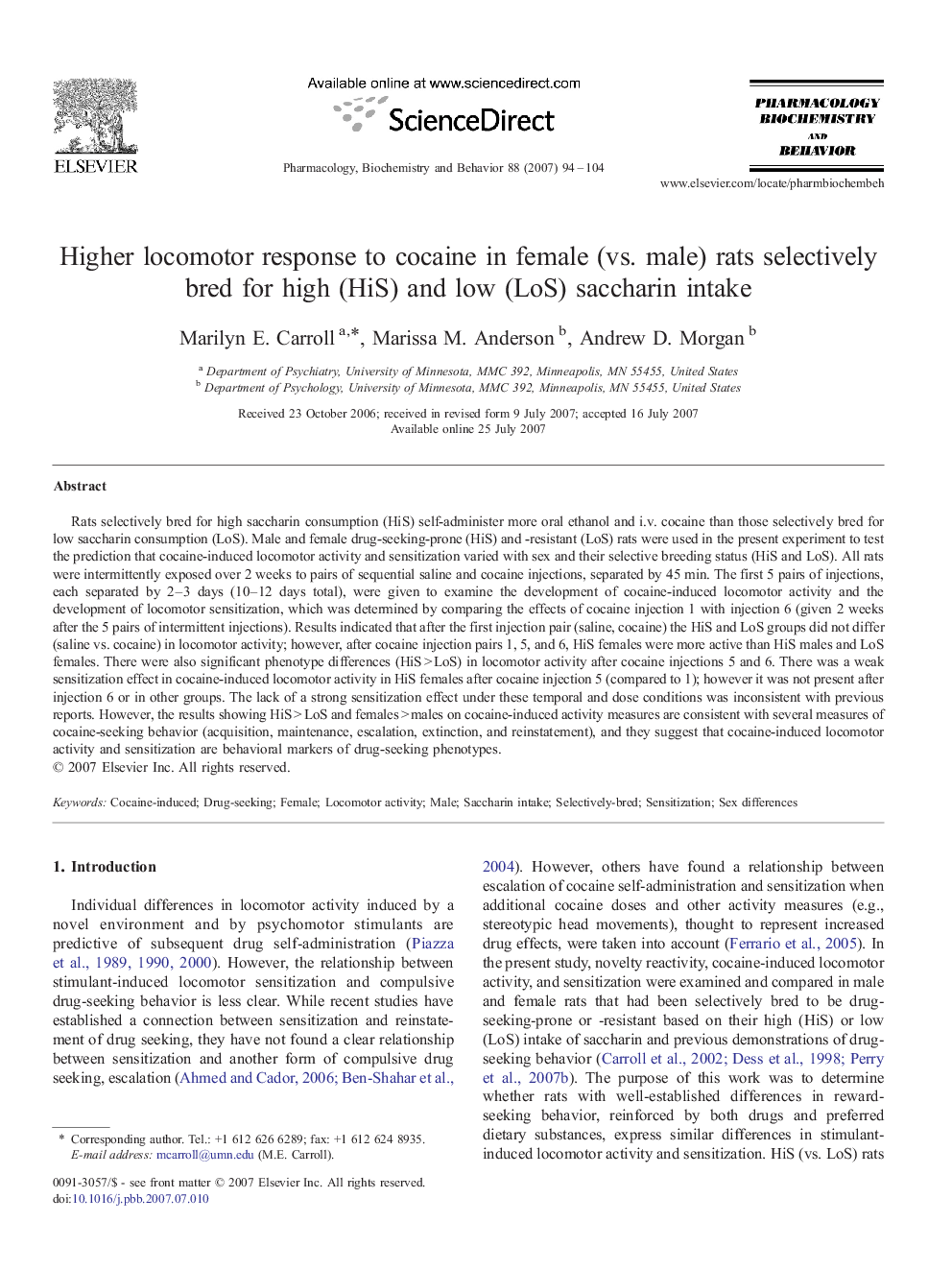| Article ID | Journal | Published Year | Pages | File Type |
|---|---|---|---|---|
| 2013771 | Pharmacology Biochemistry and Behavior | 2007 | 11 Pages |
Rats selectively bred for high saccharin consumption (HiS) self-administer more oral ethanol and i.v. cocaine than those selectively bred for low saccharin consumption (LoS). Male and female drug-seeking-prone (HiS) and -resistant (LoS) rats were used in the present experiment to test the prediction that cocaine-induced locomotor activity and sensitization varied with sex and their selective breeding status (HiS and LoS). All rats were intermittently exposed over 2 weeks to pairs of sequential saline and cocaine injections, separated by 45 min. The first 5 pairs of injections, each separated by 2–3 days (10–12 days total), were given to examine the development of cocaine-induced locomotor activity and the development of locomotor sensitization, which was determined by comparing the effects of cocaine injection 1 with injection 6 (given 2 weeks after the 5 pairs of intermittent injections). Results indicated that after the first injection pair (saline, cocaine) the HiS and LoS groups did not differ (saline vs. cocaine) in locomotor activity; however, after cocaine injection pairs 1, 5, and 6, HiS females were more active than HiS males and LoS females. There were also significant phenotype differences (HiS > LoS) in locomotor activity after cocaine injections 5 and 6. There was a weak sensitization effect in cocaine-induced locomotor activity in HiS females after cocaine injection 5 (compared to 1); however it was not present after injection 6 or in other groups. The lack of a strong sensitization effect under these temporal and dose conditions was inconsistent with previous reports. However, the results showing HiS > LoS and females > males on cocaine-induced activity measures are consistent with several measures of cocaine-seeking behavior (acquisition, maintenance, escalation, extinction, and reinstatement), and they suggest that cocaine-induced locomotor activity and sensitization are behavioral markers of drug-seeking phenotypes.
